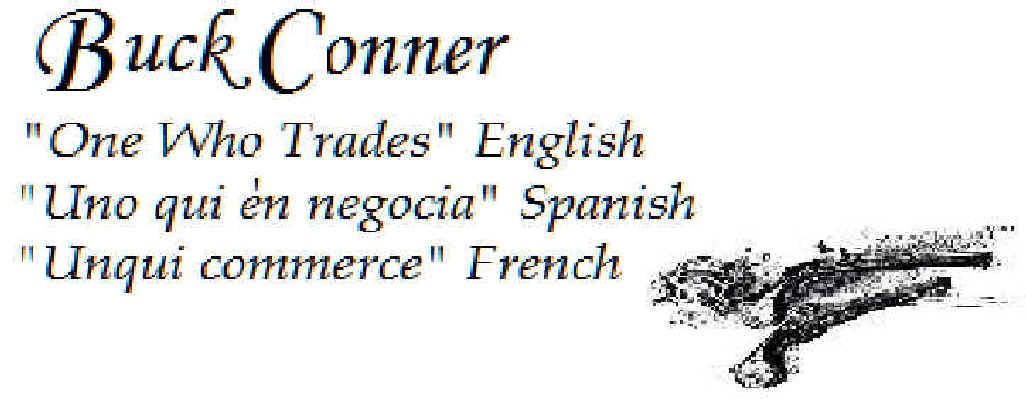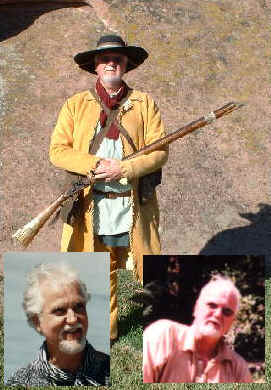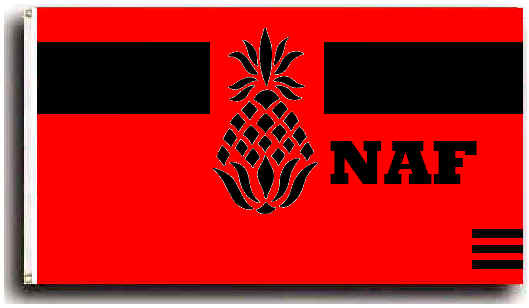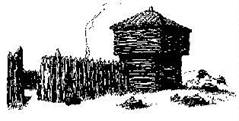|
PERIOD
MEDICINE
____________________
The
subject of Period Medicine came up in another association more
than a dozen years ago while sitting around a camp fire in western
Colorado near the small town of White Water.
One
member of this group had been a nurse when in the service in Vietnam.
Jerry had lots of information he was willing to share and gave us
permission to use his knowledge.
Good
information but always talk to your doctor before going off thinking
what you read was the correct way of taking care of yourself. Remember
what was used my our forefather's may have been the reason some had
problems later in their lives.
ALWAYS
TALK TO YOUR PERSONAL DOCTOR ABOUT YOUR HEALTH ISSUES.
____________________
PATENT MEDICINES
I came across an
English printer's poster dated 1807 which lists all the wares to be
bought in his shop. Apparently he was a bookseller, stationer and
chemist as well as printer. Among the items: Cartridge and Log-book
Paper Bills of Lading Ship Articles Atkinson's Tide Table Moore's
Navigation (last edition) Quills, Pens, Ink (patent Cake, Japan and
Indian) Black and red leather Paper-Cases Large two-sheet Maps
Memorandum Books of all sorts Patent Medicines Daffy's Elixir Anderson's
Scotch Pills Bateman's Drops Hooper's Female Pills British Oil Godfrey's
Cordial Molineux's Smelling Medicine Cephalic Snuff Steer's Opodeldoc
Essence of Peppermint Rooke's Matchless Balsam Turlington's Balsam of
Life You will recognize some of the medicines, but not all perhaps, as
included in fur trade lists. Hooper's Pills and Molineux's Smelling
Medicine made me think that the drugs might have been directed to
specifically male and female users, and might be a reason why some of
them don't make it to the fur trade lists. Please post this on the NWBC
list if you think it would be of general interest.
Now the 1st question
was what about HERBAL
MEDICINE, well we can touch on this subject next.
____________________
|
|
____________________
HERBAL
MEDICINE
A brief
example of an old art that has experienced a
rebirth in the last decade and into the new
century. Many have long been preoccupied with the
search for therapeutic magic relief, floundering
in botanical gardens for that cure or fast medical
find. Endless supplies of echinacea, goldenseal,
ginkgo, milk thistle, ginseng, and garlic - all
herbs mentioned by Franklin and Jefferson in their
writings and now found in modern journals, popular
magazines or on the shelves of your local health
food store.
One problem has been some of the information is
misleading and can possibility cause an imbalance
if not carefully used. A good example is the use
of echinacea, for a short term immune stimulant
does little to shore up our internal resistance
over long term. "Many wait until they are
sick to use echinacea, instead they should have
been building their immune resistance by eating
healthy, exercising regularly, using immune tonic
agents that include astraglus, schizandra, and
reishi mushrooms", according to a Civil War
Doctor's journal.
Some edibles that we all have heard of or have
used and didn't realize their real value in
helping with our physical health and well being.
BEANS
GARBANZOS, KIDNEYS, and LENTILS, black beans,
adzuki, and soy: dried beans are excellent sources
for fiber, protein and minerals. It has been a
known fact since the early 1800's that legumes
contain far more folic acid than nutritionists
previously thought, with resent tests their
theories have been proven. Like an "old wives
tale" the theory was folic acid lowers the
risk of birth defects and now after several
centuries researchers now have proved the idea at
Washington State University.
IODINE
IODINE has always been used in the healing and
treatment of wounds, along with its use added in
several products used for centuries worldwide.
Iodine deficiency can cause thyroid problems and
mental retardation according to history with early
medical studies in Europe and confirmed again in
the New World as early as 1810. Fortunately it is
one of the most preventable conditions with the
advent of table salt, its iodized. Ben Franklin
and Thomas Jefferson suggested to increase your
intake of iodine other than salt, eat more
vegetables and seafood, which modern research have
found to be true.
DRIED FRUIT
DRIED FRUIT once a day in the amount of one-half
cup was believed to cut the risks of prostate
cancer as early as 1850. Today we use it as a
snack food or for an added energy source, as well
as vitamins and minerals. Just recently modern
medicine has found, one-quarter cup of dried fruit
will cut the risks of prostate cancer by 48%.
NUTS
NUTS were always thought to have great benefits
when included in one's diet, Thomas Jefferson had
a variety of nuts throughout his home and office.
Any social event from Boston to Philadelphia would
always have nuts available to its guests as a
snack and filler, until the dinner was served
according to the August 10, 1792 issue of the
PENNSYLVANIA GAZETTE. The Harvard School of Public
Health in Boston had done research in the late
1800's and found women who ate five or six
handfuls of nuts weekly had a lower risk for heart
attack than those that did not eat the natural
fruit.
CAYENNE
CAYENNE was used as a seasoning and found use in
the early 1800's to reduce pain as aspirin is used
today.
HAWTHORN
HAWTHORN herb is rich in flavonoids; dilates blood
vessels, reduces blood pressure and boosting blood
flow to coronary arties according to early
studies, now found effective in angina and
arrhythmias.
MAGNESIUM
MAGNESIUM was found to help with normal heart
functions and believed by Jefferson to reduce
heart and blood problems. Recently found to reduce
heart arrhythmias and high blood pressure, only a
175 years after Thomas Jefferson's conclusions.
PSYLLIUM
PSYLLIUM was discovered to reduce cholesterol in
the late 1800's, they just weren't sure what the
human body really needed it for ! Today doctors
prescribe PSYLLIUM for reducing cholesterol and
LDL cholesterol; add gradually and drink lots of
water.
The few herbs and fruits shown above are a small
sample of what was and is available from nature,
known by the Medicine Men from around the world,
practiced from tribal settings to early hospitals
covering recorded time. Now centuries later
"herbal healing" has been found to have
some benefit again, small world.
Some of our customers wondered why we would take
the space and time to record such a
"wondering" as this, what's it have to
do with early North American History ? But if one
would look deeper into the herbal medicine world,
they will find that a large percentage of cures
and treatments using these items and others come
from the Chinese, Native Americans and others who
are from some of the oldest cultures still around,
they recorded the benefit of herbs centuries
before the colonies formed in the New World, and
found their way as peoples moved from one land to
another.

|
.. |



